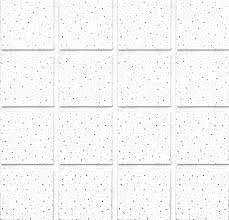Dec . 05, 2024 16:43 Back to list
Affordable PVC Laminated Gypsum Board Pricing and Options for Your Projects
The Cost and Benefits of PVC Laminated Gypsum Boards
In today's construction and interior design world, the selection of wall materials plays a crucial role in determining the aesthetics, durability, and functionality of spaces. One such innovative product that has gained popularity is the PVC laminated gypsum board. This article examines the price trends for these boards, their benefits, and considerations for use in various applications.
Understanding PVC Laminated Gypsum Boards
PVC laminated gypsum boards are composite materials that combine gypsum boards with a layer of PVC (polyvinyl chloride) film. This construction leads to boards that are not only lightweight but also resistant to moisture, stains, and impacts. The PVC layer provides an attractive finish while enhancing the board's durability, making it a favored choice in both residential and commercial settings.
Pricing Overview
The price of PVC laminated gypsum boards can vary significantly based on several factors, including thickness, size, brand, and geographical location. On average, prices can range from $1.50 to $4.00 per square foot. As of late 2023, the demand for these products has been influenced by a variety of market conditions, leading to fluctuations in pricing.
1. Market Factors The construction industry's health largely dictates demand for PVC laminated gypsum boards. A booming construction sector in urban areas can raise prices, while economic downturns may lead to reduced demand and competitive pricing.
2. Material Quality Higher quality boards that offer greater durability and aesthetic appeal tend to cost more. Brands that invest in superior manufacturing processes and environmentally-friendly materials may charge a premium.
3. Customization Customization options, such as specific colors, textures, or finishes, can also impact the cost. Specialized designs may require advanced printing techniques or additional processing, leading to higher overall prices.
4. Geographic Variation Prices can differ by region due to transportation costs, local demand, and availability of materials. Urban areas often experience higher prices compared to rural locations.
pvc laminated gypsum board price

Benefits of PVC Laminated Gypsum Boards
1. Aesthetic Versatility The variety of colors and finishes available makes PVC laminated gypsum boards suitable for diverse interior styles—from modern minimalist to traditional aesthetics.
2. Durability The moisture and stain resistance properties of the PVC layer help these boards maintain their appearance over time, making them ideal for high-traffic areas or humid environments such as kitchens and bathrooms.
3. Ease of Installation These boards are relatively easy to install, which can reduce labor costs in construction projects. They can be cut and shaped easily to fit a variety of spaces, allowing for flexibility in design.
4. Maintenance Due to their non-porous surface, PVC laminated boards are easy to clean and maintain. Dust and stains can be wiped off without extensive scrubbing, making them a practical choice for both homeowners and businesses.
5. Thermal and Acoustic Insulation Gypsum naturally provides some insulation properties, while the PVC layer can further help in sound dampening, contributing to energy efficiency and comfort within spaces.
Considerations for Use
While PVC laminated gypsum boards offer numerous advantages, it is essential to consider certain factors before opting for them. The installation must be done according to manufacturer recommendations to ensure longevity. Furthermore, the environmental impact of PVC production and disposal should be considered, prompting discussions around sustainability in material selection.
Conclusion
In summary, PVC laminated gypsum boards provide a unique combination of aesthetic appeal, durability, and practical benefits, making them an excellent choice for modern construction and design. With prices varying based on multiple factors, it's crucial for consumers and contractors to conduct thorough market research when considering their purchase. By weighing the benefits against the costs, decision-makers can make informed choices that align with their specific project needs and budgetary constraints.
-
Quality Ceiling Trap Doors & Access Panels | Easy & Secure AccessNewsAug.30,2025
-
Durable Ceiling T Grid Systems | Easy InstallationNewsAug.29,2025
-
PVC Gypsum Ceiling: Durable, Laminated Tiles for Modern SpacesNewsAug.28,2025
-
Pvc Gypsum Ceiling Is DurableNewsAug.21,2025
-
Mineral Fiber Board Is DurableNewsAug.21,2025
-
Ceiling Tile Clip Reusable DesignNewsAug.21,2025







